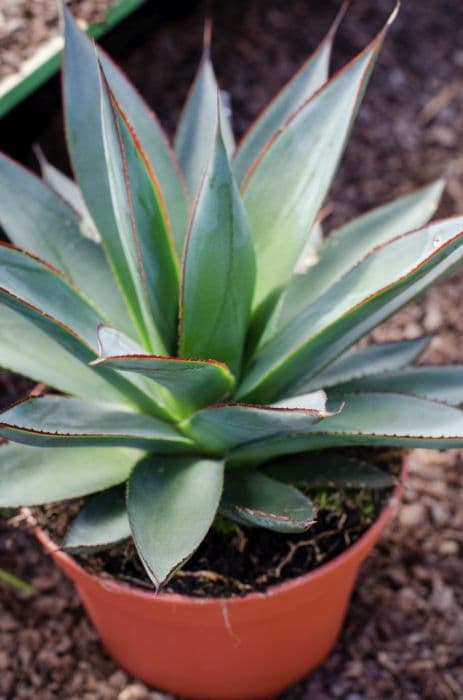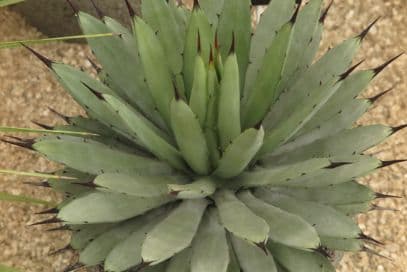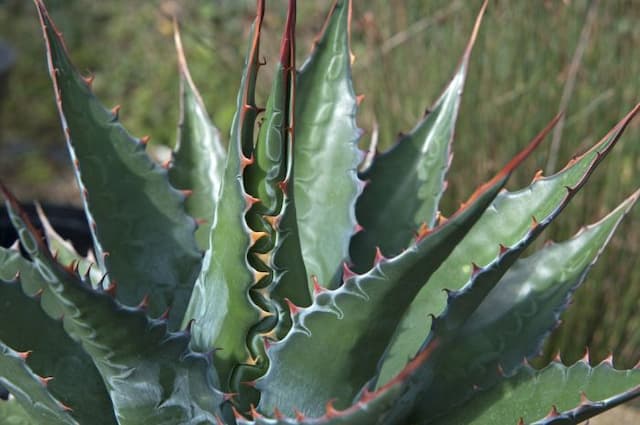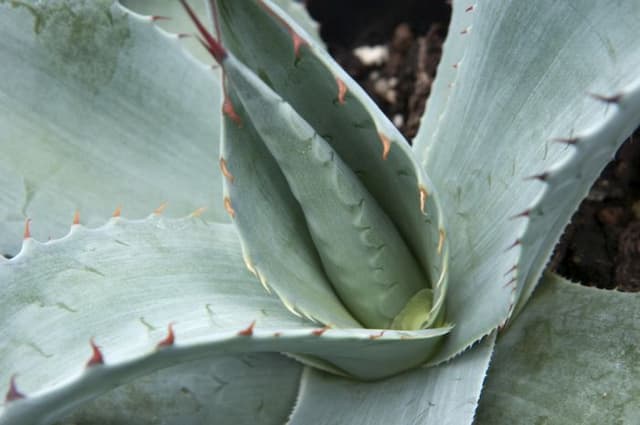Allen's Hybrid Squill Scilla × allenii

ABOUT
The plant in question is known by the common name Allen's Scilla. It is a bulbous perennial that showcases an appealing aesthetic, particularly during its blooming period. Allen's Scilla features a rosette of basal leaves that are typically glossy and strap-shaped, lending a lush green backdrop to the flowers. The blooms of Allen's Scilla are the most striking aspect of the plant. They appear in clusters atop erect, leafless stems that rise from the base of the plant. Each cluster, known as an inflorescence, is composed of bell-shaped flowers that have a delicate and somewhat dainty appearance. These flowers usually exhibit a vivid color palette, often in hues of blue, purple, or violet, which adds a vibrant touch to gardens in the blooming season. The overall impression of Allen's Scilla during its peak flowering time is one of charming, bright-colored blossoms held against a contrasting verdant background of leaves, making this plant a sought-after addition to many garden settings for its ornamental appeal.
About this plant
 Names
NamesFamily
Asparagaceae.
Synonyms
No common names available.
Common names
Scilla × allenii.
 Toxicity
ToxicityTo humans
Scilla × allenii, known commonly as Allen's Scilla, contains toxic compounds, particularly in the bulbs. If parts of the plant or bulb are ingested, they can cause symptoms such as nausea, vomiting, diarrhea, and salivation. In severe cases, ingestion could lead to more serious symptoms, including cardiac arrhythmia and tremors. Handling the plant might also cause skin irritation in sensitive individuals.
To pets
Allen's Scilla is toxic to pets, such as dogs and cats, with the bulb being the most poisonous part. If a pet ingests any part of the plant, symptoms may include vomiting, diarrhea, drooling, weakness, and possibly seizures. In severe cases, it can lead to changes in heart rate and rhythm, which can be life-threatening. Owners should seek veterinary attention immediately if they suspect their pet has ingested this plant.
 Characteristics
CharacteristicsLife cycle
Perennials
Foliage type
Deciduous
Color of leaves
Green
Flower color
Blue
Height
6-12 inches (15-30 cm)
Spread
3-6 inches (8-15 cm)
Plant type
Bulb
Hardiness zones
4-8
Native area
Hybrid
Benefits
 General Benefits
General Benefits- Ornamental Value: Adds aesthetic appeal to gardens with its bright blue flowers.
- Pollinator Attraction: Attracts bees and other pollinators, supporting local ecosystems.
- Spring Interest: Blooms in early spring, providing early color to the garden landscape.
- Low Maintenance: Requires minimal care once established, making it easy for gardeners of all skill levels.
- Drought Tolerance: Once established, it has good tolerance to periods of dryness.
- Naturalizing: Has the ability to spread and naturalize over time, filling out garden spaces.
- Cold Hardy: Can survive in colder climates, making it suitable for a range of gardens.
- Deer Resistance: Typically not favored by deer, reducing the likelihood of damage to the plant.
 Medical Properties
Medical PropertiesThis plant is not used for medical purposes.
 Air-purifying Qualities
Air-purifying QualitiesThis plant is not specifically known for air purifying qualities.
 Other Uses
Other Uses- Scilla × allenii bulbs can be ground up to create a natural glue thanks to their sticky juice.
- The plant's vivid blue flowers can be used for natural dyeing of fabrics, providing a soft blue tint.
- In floral language or floriography, scilla flowers can be used to represent constancy and sincerity in handmade bouquets.
- Its dried flowers may serve as a component in potpourri blends due to their shape and color retaining properties.
- Photographers and artists may use scilla as a subject for their work, capturing the early signs of spring.
- Scilla can be used in educational settings to demonstrate bulb plant growth and flowering patterns in botany classes.
- Its bulbs may be used in crafting for their interesting textures when dried and cured properly.
- The plant can feature in ecological studies as an early nectar source for pollinators waking up in spring.
- Scilla can be planted as a way to compete against more aggressive weeds in garden settings due to its hardy nature.
- Landscapers might use the pattern of its spreading growth to create 'rivers' of blue in large-scale garden designs.
Interesting Facts
 Feng Shui
Feng ShuiThe plant Scilla × allenii, commonly known as Chionodoxa allenii, is not used in Feng Shui practice.
 Zodiac Sign Compitability
Zodiac Sign CompitabilityThe plant Chionodoxa allenii is not used in astrology practice.
 Plant Symbolism
Plant Symbolism- Resilience: Scilla × allenii, commonly known as Chionodoxa forbesii or glory-of-the-snow, often blooms early in spring, sometimes pushing through the snow. This action symbolizes resilience and overcoming adversities, much like perseverance through hard times.
- Hope: The plant's early bloom is also viewed as a sign of hope, representing the promises of spring and new beginnings after long, cold winters.
- Wonder: The striking blue of the flowers can evoke a sense of wonder and enchantment, symbolizing the beauty and mystery of nature.
 Water
WaterWater your Scilla × allenii, also known as Chionodoxa × allenii or Pink Giant Glory-of-the-snow, moderately to maintain moist, but not waterlogged, soil. Generally, water these bulbs once a week with about 1 inch of water during their active growing season in the spring. Once the flowering has finished, and the leaves start to yellow, gradually reduce watering. They need less water during their dormant period in the summer. Overwatering can cause bulb rot, so it is crucial to ensure good drainage. Provide about half a gallon every two weeks when the plant is actively growing in pots, adjusting based on weather conditions.
 Light
LightChionodoxa × allenii thrives best in full sun to partial shade. An ideal spot for this plant would be an area that receives morning sunlight and is shaded in the hotter parts of the afternoon. If planted indoors, a south or east-facing window would be beneficial to provide the right amount of natural light. Insufficient light can lead to weak growth and fewer flowers, so make sure it gets enough light without being exposed to harsh midday sun.
 Temperature
TemperatureChionodoxa × allenii prefers cool to moderate temperatures, thriving between 50°F and 70°F. It can handle temperatures as low as 20°F, making it suitable for outdoor growth in many regions. During its dormant period in summer, it can tolerate higher temperatures, although it's not ideal. Extreme heat can be detrimental, so if the temperature rises consistently above 80°F, it's important to provide some shade.
 Pruning
PruningPruning is not necessary for Chionodoxa × allenii as it is a bulbous plant, but you can remove spent flower stalks to maintain a tidy appearance and prevent self-seeding. After flowering, allow the leaves to die back naturally as they provide energy for the bulb for the next season. The best time to clear away dead foliage is when it has yellowed and comes away easily, usually in late spring or early summer.
 Cleaning
CleaningAs needed
 Soil
SoilScilla × allenii, commonly known as hybrid squill, thrives in a well-draining, loamy soil mix with a pH range of 6.0 to 7.0. A blend of two parts garden soil, one part peat, and one part perlite or sand creates an ideal environment for root growth and moisture retention.
 Repotting
RepottingHybrid squill, or Scilla × allenii, should be repotted every 2-3 years to refresh the soil and accommodate root growth. Best to repot after the flowering period when the plant is in its dormant phase.
 Humidity & Misting
Humidity & MistingHybrid squill, or Scilla × allenii, prefers moderate humidity levels, around 40-50%, which is often found in a typical home environment without the need for additional humidity control measures.
 Suitable locations
Suitable locationsIndoor
Place hybrid squill in a bright spot, water when soil dries.
Outdoor
Plant hybrid squill in partial shade, ensure soil drainage.
 Life cycle
Life cycleScilla × allenii, commonly known as Allen's Scilla, begins its life cycle as a bulb planted in well-draining soil in autumn. The bulb remains dormant through winter, enduring the cold months by drawing on the stored nutrients within. In early spring, the bulb generates growth, sending up strap-shaped leaves followed closely by flower stems bearing star-shaped blue flowers. After flowering, the plant undergoes pollination, potentially leading to the production of seed capsules if pollinators such as bees have visited the blooms. Once the flowering period ends and seeds are set, the foliage dies back, and the plant reenters a dormant period through the summer months. The bulb, now replenished with nutrients absorbed during the growth period, waits to begin the next growth cycle when conditions are favorable again in the following autumn.
 Propogation
PropogationPropogation time
Spring
Propogation: Scilla × allenii, commonly known as Allen's Scilla, is most effectively propagated by dividing its bulbs. The best time to propagate Allen's Scilla in this way is in the fall, after the leaves have died back and the plant has gone dormant. To propagate by bulb division, carefully dig up the bulbs and gently separate any offsets from the main bulb. These offsets are miniature bulbs that can be replanted immediately to grow into new plants. Plant the offsets about 3 inches (roughly 7.5 centimeters) deep and spaced at least 4 inches (approximately 10 centimeters) apart, in well-draining soil that receives full sun to partial shade. This method of propagation is simple and maintains the true characteristics of the parent plant, ensuring that the newly propagated Scilla × allenii plants will bloom with the same vigor and color as the original.









